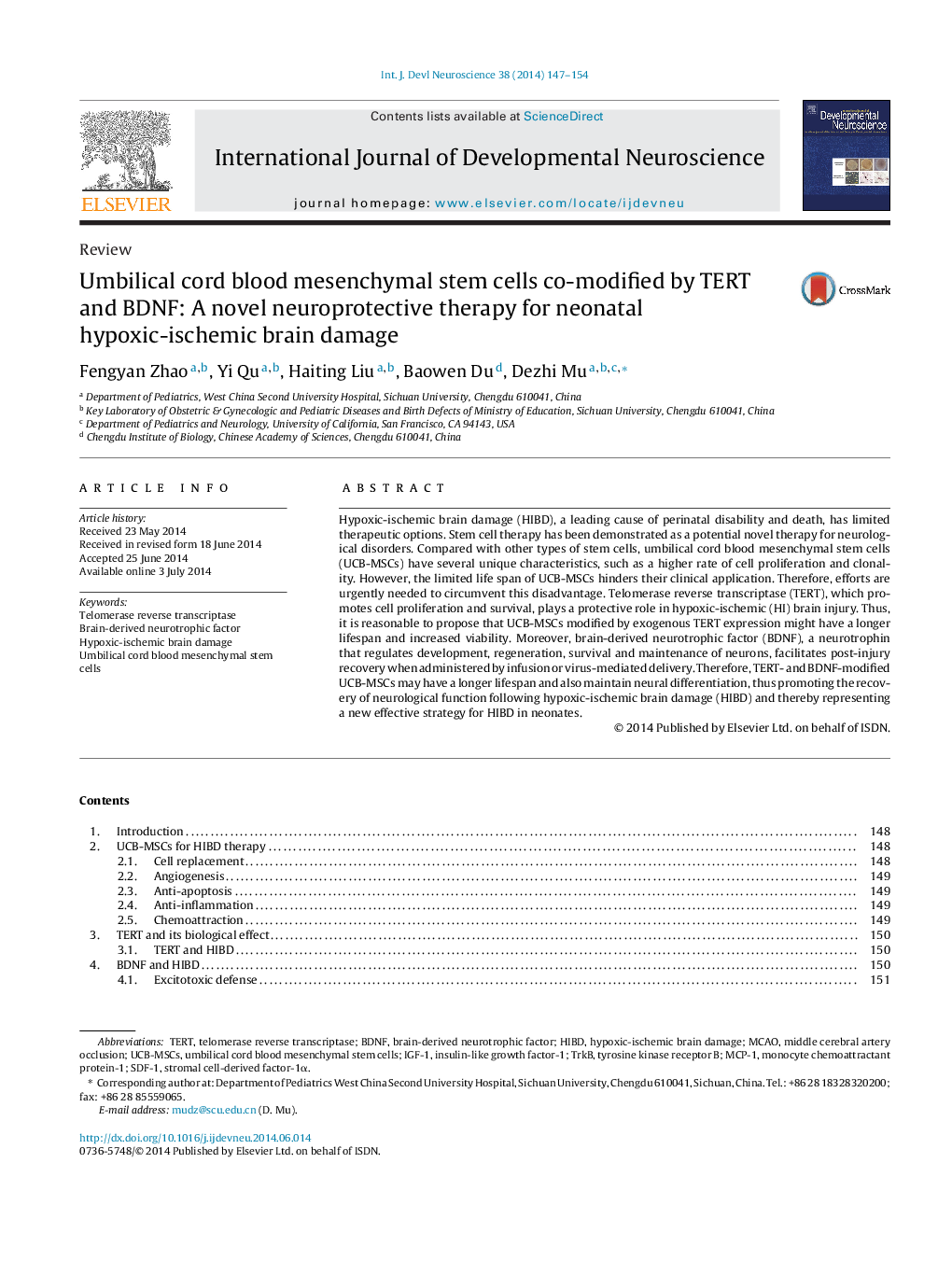| کد مقاله | کد نشریه | سال انتشار | مقاله انگلیسی | نسخه تمام متن |
|---|---|---|---|---|
| 2785947 | 1568393 | 2014 | 8 صفحه PDF | دانلود رایگان |

• We characterized the therapeutic potential of UCB-MSCs for HIBD.
• We evaluated the biological effects of both TERT and BDNF on hypoxic-ischemic brain injury.
• We hypothesize that UCB-MSCs co-transfected by TERT and BDNF would protect the neonatal brain after hypoxic-ischemic (HI) injury.
Hypoxic-ischemic brain damage (HIBD), a leading cause of perinatal disability and death, has limited therapeutic options. Stem cell therapy has been demonstrated as a potential novel therapy for neurological disorders. Compared with other types of stem cells, umbilical cord blood mesenchymal stem cells (UCB-MSCs) have several unique characteristics, such as a higher rate of cell proliferation and clonality. However, the limited life span of UCB-MSCs hinders their clinical application. Therefore, efforts are urgently needed to circumvent this disadvantage. Telomerase reverse transcriptase (TERT), which promotes cell proliferation and survival, plays a protective role in hypoxic-ischemic (HI) brain injury. Thus, it is reasonable to propose that UCB-MSCs modified by exogenous TERT expression might have a longer lifespan and increased viability. Moreover, brain-derived neurotrophic factor (BDNF), a neurotrophin that regulates development, regeneration, survival and maintenance of neurons, facilitates post-injury recovery when administered by infusion or virus-mediated delivery. Therefore, TERT- and BDNF-modified UCB-MSCs may have a longer lifespan and also maintain neural differentiation, thus promoting the recovery of neurological function following hypoxic-ischemic brain damage (HIBD) and thereby representing a new effective strategy for HIBD in neonates.
TERT can immortalize UCB-MSCs and BDNF can promote their in vivo proliferation and chemoattraction. UCB-MSCs co-transfected by TERT and BDNF can act on the major symptoms of HIE. —|: inhibit →: promote.Figure optionsDownload high-quality image (99 K)Download as PowerPoint slide
Journal: International Journal of Developmental Neuroscience - Volume 38, November 2014, Pages 147–154